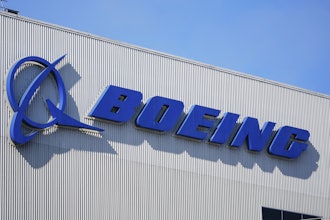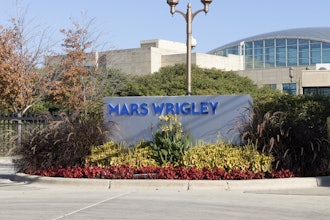Food manufacturers often make significant investments in product, packaging and processing innovations to gain a competitive advantage. That advantage could lead to competitors adopting the same innovations without respecting the original manufacturer’s intellectual-property rights. When that happens, some manufacturers believe that litigation to protect their intellectual-property rights would be a bad investment because litigation involves unforeseeable and uncontrollable costs.
Alternative-fee arrangements offer food manufacturers a way to protect their innovations and manage the overall cost of litigation. Through alternative-fee arrangements (AFAs) food manufacturers can share the financial risks of litigation with a law firm and more fully leverage the value of their proprietary innovations. The law firm may also implement Legal Project Management (LPM) tools as a means of keeping fees under control. LPM utilizes budget and people management techniques to ensure the case is progressing toward trial without any unnecessary discovery diversions that can run up fees and reduce the profitability of AFAs to the firm.
Innovation and Intellectual Property Rights
While not every manufacturing innovation qualifies as intellectual property, intellectual property laws protect many new, useful and non-obvious innovations in the form of patents. Once a patent is granted, the patent holder may then restrict others from using the invention without a license or other permission — and collect damages or obtain an injunction when unauthorized use or infringement occurs.
The AFA Buffet: Protection and Predictability
The economic downturn motivated companies to become wiser about managing the costs of their litigation and, at the same time, required law firms to become more creative in the pricing models offered to clients. As clients seek opportunities to partner with law firms to share litigation risk, law firms have looked to litigation-intense areas as models to create budgets for contemplated litigation.
Smart law firms have learned to combine that information with other budgeting and forecasting tools in order to offer clients with litigation claims a range of alternative pricing models. In order for an AFA to be profitable, however, the attorneys working on the case must be efficient and smart with their billings. Legal Project Management techniques are used to manage the people side of the equation. While the details can vary, AFAs models include:
- Reduced rate per diem billing — company negotiates for a reduction of a firm’s standard hourly rate.
- Reduced rate per diem billing with success fee — company receives a discount off standard rates. The client and the law firm also negotiate a tiered percentile recapture of the full rate and/or a performance bonus based upon agreed measures of success.
- Flat fee — company obtains an agreed upon monthly, quarterly, yearly or life of litigation fee, which does not change regardless of outcome.
- Capped fee per diem — the law firm and the company agree to hourly rates for work and a cap of the total legal spend. The parties create a “collar” around a percentile of that spend where no increase or decrease of the agreed upon amount occurs. Outside the collar, the client and law firm share the savings or over-run in agreed upon percentages.
- Blended rate per diem billing — provides a single, blended rate for all attorneys working on a file or a rate based on status (i.e., partner, associate, paralegal) rather than using each individual attorney’s standard rate. The amount of discount on rates also usually involves a results-based premium.
- Contingency — law firm advances attorney time in return for a percentage of the proceeds of the case.
In each scenario, an agreement should also be reached on who pays costs.
AFAs at Work: A Potential Case Scenario
Imagine a food manufacturer with patented technology that certain competitors have begun to use without permission for a competing product. The manufacturer wishes to pursue patent infringement litigation but wants to build predictability into their legal spend.
After interviewing a number of law firms — or putting out an RFP — the manufacturer accepts the proposal of a law firm that offers an AFA based on a reduced rate with a success rate tied to overall recovery. Under their agreement the manufacturer pays 70 percent of the firm’s usual hourly rates, and then, depending on the success of the actual amount recovered, an additional amount reflecting a shared understanding of the likely recovery in the case. The agreement’s success fee schedule provides:
- For recoveries of $20 million or greater, the law firm receives 5x the amount not billed because of the 30% discount off regular hourly rate.
- For recoveries of or greater than $15but less than $20 million, law firm receives 4x its unbilled time.
- For recoveries of or greater than $10 but less than $15 million, law firm receives 3x its unbilled time.
- For recoveries of or greater than $5 but less than $10 million, law firm receives 2x its unbilled time.
- For recoveries of our greater than $3 but less than $5 million, law firm receives just its unbilled time.
- Recoveries under $3 million produce no additional law firm fees.
The law firm then brings patent infringement claims against a number of infringing competitors. Following extensive discovery and a beneficial construction of the client’s patent claims, the case settles on the eve of trial for a total of $12 million. Up to that point, the client’s responsibility for 70 percent of billings has required an investment of $2 million. Under the AFA, the settlement gives the law firm an additional success fee of $3 million, netting it $5 million and the manufacturer nets a recovery of $7 million along with the right to control how competitors use its technology — a winning partnership for both.
Conclusion
Food manufacturers know the value their patents provide. Developing an understanding of the breadth of available AFAs further leverages the business advantages of those innovations by offering a way to protect them from a competitor’s wrongful use while still managing the return on investment of a legal spend.
Katie Crosby Lehmann, a partner at Robins, Kaplan, Miller & Ciresi L.L.P., directs the firm’s legal project management functions. Her trial practice focuses on all areas of business litigation, with an emphasis on patent litigation, including infringement cases involving food packaging. She also designed OneBudget,™ a software program that tracks profitability metrics for AFAs. She can be reached at [email protected].



















